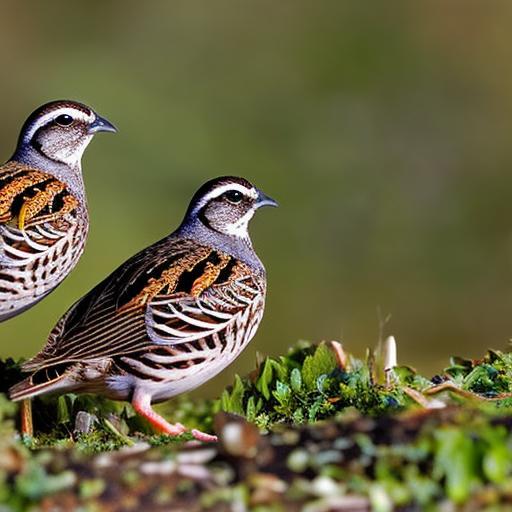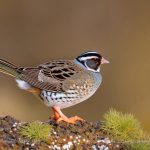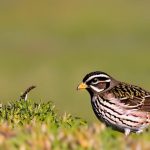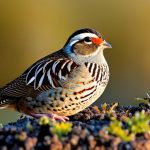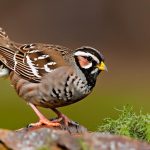Keeping quail on wire is a popular and practical method for housing these small birds. Wire enclosures provide excellent ventilation, easy cleaning, and protection from predators. Quail are ground-dwelling birds that do not roost, so they are well-suited to wire flooring. This method of housing also allows for efficient waste management and prevents the birds from coming into contact with their droppings, reducing the risk of disease. In this article, we will explore the various aspects of keeping quail on wire, including choosing the right wire, building a secure enclosure, providing proper flooring, feeding and watering, maintaining cleanliness and hygiene, and health and safety considerations.
Key Takeaways
- Keeping quail on wire is a popular and efficient method of housing for quail breeders.
- When choosing wire for quail housing, it is important to consider the size and spacing of the wire to ensure the safety and comfort of the quail.
- Building a secure quail enclosure on wire involves proper installation and reinforcement to prevent predators from accessing the quail.
- Providing proper flooring for quail on wire includes using materials that are comfortable for the quail to walk on and easy to clean.
- Feeding and watering quail in a wire enclosure requires the use of appropriate feeders and waterers to prevent spillage and contamination.
Choosing the Right Wire for Quail Housing
When it comes to choosing the right wire for quail housing, there are a few important factors to consider. The wire should be strong enough to withstand the weight of the quail and any potential predators. A good option is 1/2 inch hardware cloth, which is sturdy and provides a secure barrier against predators. It is important to avoid using wire with openings that are too large, as quail can easily become trapped or injured. Additionally, the wire should be rust-resistant and easy to clean. Galvanized wire is a popular choice for quail housing as it is durable and resistant to corrosion. It is also important to consider the spacing between the wires, as this will affect the comfort and safety of the quail. The wire should be spaced closely enough to prevent the birds from getting their feet stuck, but not so close that it becomes difficult to clean.
Another important consideration when choosing wire for quail housing is the height of the enclosure. Quail are ground-dwelling birds and do not fly, so the wire should be tall enough to allow them to move around comfortably without feeling cramped. A good rule of thumb is to provide at least 1 square foot of space per bird, so the height of the wire should accommodate this. Overall, choosing the right wire for quail housing is essential for providing a safe and comfortable environment for these birds.
Building a Secure Quail Enclosure on Wire
Building a secure quail enclosure on wire is essential for protecting the birds from predators and providing a safe and comfortable living space. The first step is to construct a sturdy frame for the enclosure using wood or metal posts. The frame should be strong enough to support the weight of the wire and withstand any attempts by predators to break in. Once the frame is in place, the wire can be attached securely using staples or clips. It is important to ensure that there are no gaps or loose ends where predators could gain access.
In addition to securing the wire to the frame, it is important to consider adding a roof to the enclosure for extra protection. This can be done using more wire or other materials such as netting or corrugated plastic. A roof will not only prevent predators from entering from above but also provide shade and protection from the elements. Finally, it is important to consider adding a secure door to the enclosure that can be locked at night to prevent predators from gaining access. Building a secure quail enclosure on wire is essential for providing a safe and comfortable living space for these birds.
Providing Proper Flooring for Quail on Wire
When it comes to providing proper flooring for quail on wire, there are a few important considerations to keep in mind. Quail are ground-dwelling birds that do not roost, so they are well-suited to wire flooring. However, it is important to ensure that the wire is comfortable and safe for the birds to walk on. One option is to cover the wire with a layer of straw or wood shavings to provide a soft and comfortable surface for the quail to walk on. This will also help to absorb moisture and prevent the birds from coming into direct contact with their droppings.
Another option for providing proper flooring for quail on wire is to use plastic or rubber mats. These can be placed on top of the wire to provide a solid and comfortable surface for the birds to walk on. Mats are easy to clean and can be removed and replaced as needed. It is important to ensure that the mats are securely in place and do not pose a tripping hazard for the quail. Overall, providing proper flooring for quail on wire is essential for ensuring their comfort and well-being.
Feeding and Watering Quail in a Wire Enclosure
Feeding and watering quail in a wire enclosure requires careful consideration to ensure that the birds have access to adequate nutrition and hydration. One option for feeding quail in a wire enclosure is to use hanging feeders that can be attached to the sides of the enclosure. This will prevent the feed from coming into contact with droppings and reduce waste. It is important to ensure that the feeders are securely attached and at a height that is easily accessible to the quail.
In addition to providing feed, it is important to ensure that quail have access to clean water at all times. One option for watering quail in a wire enclosure is to use nipple drinkers that can be attached to the sides of the enclosure. These provide a constant supply of fresh water and prevent spillage and contamination. It is important to regularly check and clean the drinkers to ensure that they are functioning properly. Overall, feeding and watering quail in a wire enclosure requires careful consideration to ensure that the birds have access to adequate nutrition and hydration.
Maintaining Cleanliness and Hygiene in a Quail Wire Setup
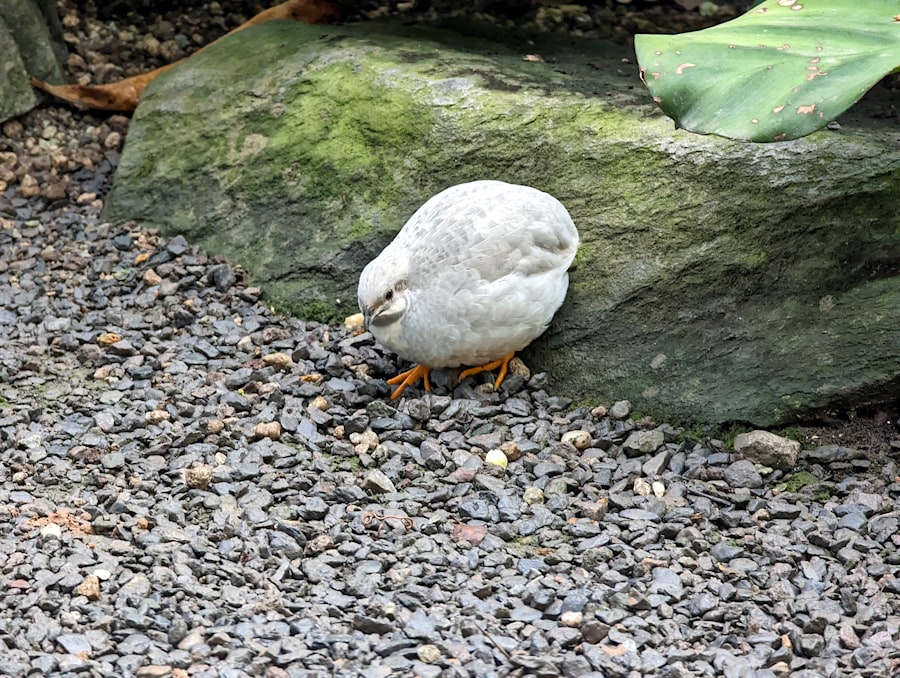
Maintaining cleanliness and hygiene in a quail wire setup is essential for preventing disease and ensuring the well-being of the birds. One important aspect of cleanliness is regular removal of droppings from the wire flooring. This can be done using a rake or shovel, or by hosing down the wire with water. It is important to ensure that droppings are removed promptly to prevent ammonia build-up and reduce the risk of respiratory issues for the quail.
In addition to regular cleaning of the wire flooring, it is important to regularly clean and disinfect feeders, waterers, and any other equipment in the enclosure. This will help prevent the spread of disease and ensure that the birds have access to clean food and water. It is also important to regularly inspect the enclosure for any signs of wear or damage, such as loose wires or broken posts, and make repairs as needed. Overall, maintaining cleanliness and hygiene in a quail wire setup is essential for ensuring the health and well-being of the birds.
Health and Safety Considerations for Quail on Wire
When keeping quail on wire, there are several health and safety considerations to keep in mind to ensure the well-being of the birds. One important consideration is providing adequate protection from predators. This includes ensuring that the wire enclosure is secure and free from any gaps or loose ends where predators could gain access. It is also important to provide a roof over the enclosure to prevent predators from entering from above.
Another important health consideration for quail on wire is preventing foot injuries. The wire flooring should be smooth and free from any sharp edges or protruding wires that could cause injury to the birds’ feet. Providing a layer of straw or wood shavings on top of the wire can help cushion their feet and prevent injuries.
It is also important to monitor the birds regularly for any signs of illness or injury, such as changes in behavior, decreased appetite, or feather loss. Any sick or injured birds should be isolated and provided with appropriate care or veterinary attention as needed.
Overall, keeping quail on wire requires careful attention to health and safety considerations to ensure that the birds are safe, healthy, and thriving in their enclosure.
If you’re interested in raising quail, you might also want to explore the topic of keeping chickens. Poultry Wizard has a helpful article on “How Many Chickens Do You Need for a Family of 4?” that provides valuable insights into the practical aspects of raising chickens for a family. It’s a great resource to complement your knowledge about quail keeping. Check it out here.
FAQs
What are the benefits of keeping quail on wire?
Quail kept on wire have cleaner living conditions, are protected from predators, and have easier access to food and water. Additionally, wire flooring allows for better air circulation and reduces the risk of disease.
What type of wire is best for keeping quail?
For keeping quail, it is recommended to use wire with a small mesh size (1/2 inch or smaller) to prevent the birds from getting their feet stuck. Galvanized wire is a popular choice due to its durability and resistance to corrosion.
How should the wire flooring be maintained for quail?
The wire flooring should be regularly cleaned to remove droppings and debris. It is also important to provide a solid surface or perch for the quail to rest on to prevent foot injuries.
What are the housing requirements for quail kept on wire?
Quail kept on wire should have access to a sheltered area for protection from the elements and predators. The housing should also provide adequate space for the quail to move around and access food and water.
What should be considered when feeding quail kept on wire?
Quail kept on wire should be provided with a balanced diet that includes commercial quail feed, as well as access to grit and fresh water. It is important to monitor their food intake and adjust as needed to maintain their health.
Meet Walter, the feathered-friend fanatic of Florida! Nestled in the sunshine state, Walter struts through life with his feathered companions, clucking his way to happiness. With a coop that’s fancier than a five-star hotel, he’s the Don Juan of the chicken world. When he’s not teaching his hens to do the cha-cha, you’ll find him in a heated debate with his prized rooster, Sir Clucks-a-Lot. Walter’s poultry passion is no yolk; he’s the sunny-side-up guy you never knew you needed in your flock of friends!

